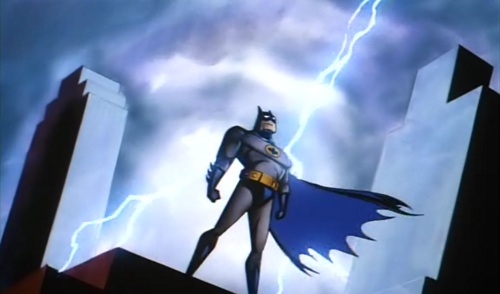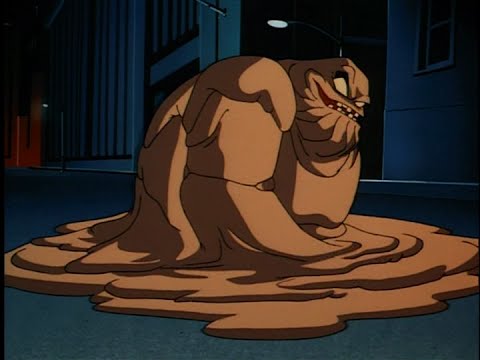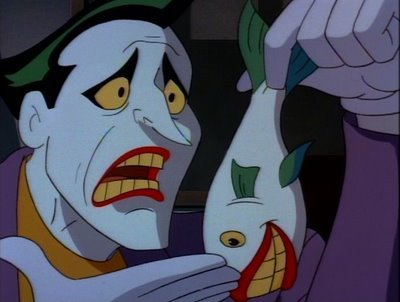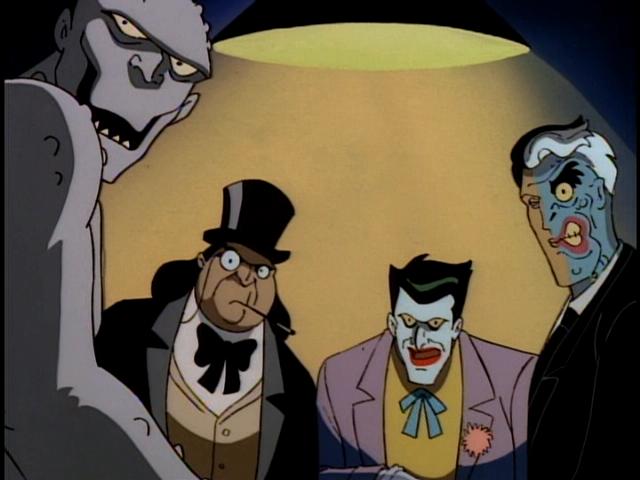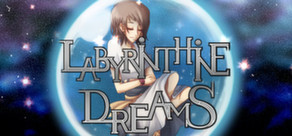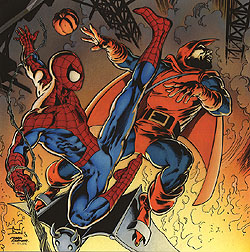The Dark Knight is back on the screen thanks to Batman vs. Superman, where the new Ben Affleck Batman fights the Henry Cavill Superman from Man of Steel. It's not particularly good and I don't find that surprising - these days superhero movies are so disposable that the main purpose of each one seems to be to get you excited for the next movie rather than the one you just paid money to see. Still, between hearing of its arrival and playing Batman: Arkham Knight this past winter, my interest in the character came back. So I did what I usually do - I went back to Batman: The Animated Series, which was always the definitive version of the hero for me.
All those clickbait Buzzfeed articles talk about is Boy Meets World or Hey Arnold, but this show's aged a lot better than those shows...or for that matter, most of the youth-oriented shows of that entire era. Even at the time, its exemplary storytelling, art direction, music and voice acting were a shock and made it an instant classic. More than 20 years later, I still find new ways that it influences my own writing. So while I may enjoy making jokes at Buzzfeed's expense, one thing I have learned from it is that people really like lists. With that in mind, let's count off the 20 best episodes of this timeless show. There was also a Superman animated series that was very good, but I don't know it quite well enough to put together a list like this.
20. Night of the Ninja
Written by Steve Perry
Directed by Kevin Altieri
Antagonist: Kyodai Ken
Batman can win a physical fight against most of his enemies, as long as he keeps track of their unique gimmicks and weapons. In this episode, Bruce Wayne encounters an old rival who may be his superior in hand to hand combat. Flashbacks highlight Bruce's days of training in Japan as a younger man, learning martial arts and the discipline of a samurai. Years later, he crosses paths again with Kyodai Ken, the only student who could consistently defeat Bruce in their sparring matches. There's a lot of storytelling in this half-hour, including fun action scenes and some solid scenes for Alfred and Robin. If I had made this list as a kid, this episode would have ranked a lot higher because back then a fight between Batman and a ninja was the coolest thing ever. It's still pretty awesome.
19. If You're So Smart, Why Aren't You Rich?
Written by David Wise
Directed by Eric Radomski
Antagonist: The Riddler
The writers of the series have admitted to being intimidated by Riddler stories, which required a lot of creativity to pull off. That creativity is out in full force in this debut as the villain is brought to life by a sleek design and the charming vocal performance of John Glover. Game designer Edward Nygma is cheated out of the profits for his own blockbuster game by the slimy Daniel Mockridge and decides to use his puzzle skills for revenge. When Batman and Robin get involved, Riddler lures them into a huge maze full of booby traps and tests of intellect. If you watch enough episodes of this show, you start to realize that a lot of the supervillains are created thanks to unethical corporate behavior. So if you wind up seeing someone in Seattle or San Francisco putting people inside giant puzzle boxes, it might be time to ask EA some questions.
18. Christmas With The Joker
Written by Eddie Gorodetsky
Directed by Kent Butterworth
Antagonist: The Joker
Most episodes of Batman: The Animated Series are inspired by the noirish Denny O'Neil/Neal Adams comics of the 1970s. Not this one. With its absurd plot, onslaught of puns and many giant props, "Christmas With The Joker" hearkens back to the goofy Batman comics of the 50s and 60s. Silly as it may be, it's hard not to like an episode that begins with the Joker singing the classic "Jingle Bells, Batman Smells" song we all heard on the playground growing up. Before long, he hijacks Gotham's airwaves for his very own hilarious Christmas special. Batman and Robin are forced to deal with exploding bridges and giant Nutcracker soldiers before they finally find out what the Joker's really up to. His mundane but hilarious goal is the cherry on top of this holiday treat. I may be a little biased on this one since watching it has become a Christmas tradition for my own family.
17. House and Garden
Written by Paul Dini
Directed by Boyd Kirkland
Antagonist: Poison Ivy
It's become common for writers who think they are being edgy to depict Batman as only slightly more stable than the crooks he brings in. This version went against that and created a well-rounded person who you could admire. Secretive, obsessive and plagued by unresolved trauma? Of course. But he's not a maniac and more importantly, is shown to have empathy. His compassion for his adversaries is at the core of this tragic episode. When Poison Ivy renounces her criminal past in favor of a normal life with a husband and adopted children, Batman is skeptical. After a while, however, he becomes convinced and there's a moving scene where hero and villain seem to reconcile for good. But all is not what it seems and the ending of this episode goes into some truly disturbing territory, at least for a superhero cartoon. We all want to believe people can redeem themselves, but it's much easier said than done.
16. Baby Doll
Written by Paul Dini
Directed by Dan Riba
Antagonist: Mary Dahl
Paul Dini again. Get used to seeing that name as we make our way further up this list, because he has a real gift for telling emotionally-driven stories that highlight the personalities and struggles of the characters. This one is so effective because it feels plausible. A sitcom star with a Gary Coleman-esque condition that keeps her body from aging has been hurt deeply by a string of career failures, so she decides to bring the family of her hit show back together...regardless of how the other actors feel about it. Mary Dahl's stylized appearance makes this episode somewhat divisive among fans, but Alison La Placa's amazing vocal performance makes it work. The first time Mary drops the childish act and speaks in her real adult voice will give you chills. The surreal, tearjerking ending is another example of what made this show so different from the other stuff on TV at the time.
15. Dreams in Darkness
Written by Judith and Garfield Reeves-Stevens
Directed by Dick Sebast
Antagonist: The Scarecrow
Batman getting hit with fear gas is standard procedure for Scarecrow stories, but this creative episode turns his hallucinations into a series of spectacular moments. The visions escalate from subtle frights like Batman seeing the Joker in the reflection of the Batcomputer to a trippy re-enactment of the death of his parents, complete with a giant gun with blood dripping out of the barrel. How the hell did they get that past the network censors? The Dark Knight finds himself detained in Arkham, helpless to stop Scarecrow from contaminating Gotham City's water supply with his fear toxin. If that last bit sounds familiar, it's because Batman Begins ripped off this episode for the film's climax (and tossed Ra's Al Ghul into the mix).
14. Joker's Wild
Written by Paul Dini
Directed by Boyd Kirkland
Antagonists: The Joker and Cameron Kaiser
This subversive episode pits the Clown Prince of Crime against a casino mogul manipulating him as part of an insurance scam. Dini assumes, correctly, that the audience would much rather root for a psychotic clown than a corporate dirtbag. Mark Hamill is on fire for this episode, offering hilarious voice work during Joker's suspiciously easy escape from Arkham and his antics inside the casino. Since the whole place is capitalizing on the Joker's image, he can walk around in his costume and just look like one of the employees. Only Bruce Wayne is able to recognize his laugh and heads over to the blackjack table to troll his arch-enemy in a hilarious scene, one of several spot-on character moments in this episode. Pay attention to the scene where Joker hijacks a truck - the driver is dressed just like Super Mario.
13. Feat of Clay, parts I and II
Written by Michael Reaves and Marv Wolfman
Directed by Kevin Altieri and Frank Paur
Antagonists: Clayface and Roland Daggett
This dark, powerful two-parter takes one of the more ridiculous villains from the old Batman comics and refashions him as a tragic monster. As we've seen a few times already, the supervillain may be dangerous but he's not half as evil as the unethical corporate behavior that created him. Movie star Matt Hagen (Ron Perlman) relies on the revolutionary "Renuyu" cream to hide the scars he sustained after a car accident, but the stuff is highly addictive, a fact that its creator Roland Daggett has taken advantage of to keep Hagen on a leash. As I kid I didn't realize how obvious the parallels were to real-life drug use, but Matt Hagen is clearly a junkie. When he finally rebels, Daggett's hired goons nearly drown him in the Renuyu cream, which gives his body the ability to take any shape he can imagine, turning him into Clayface. There's a B-plot about Bruce Wayne being framed that drags down the first half a little bit, but the second half is a non-stop thrill ride. Clayface confronts Daggett in the most dramatic way possible before losing control of his powers and madly transforming into his numerous screen personas. It's a breathtaking piece of animation, although I'm tempted to say that the most powerful aspect of this one might be Shirley Walker's score. She uses two separate themes for Hagen and Clayface, weaving them together to great effect. In particular, the music at the ending of this episode makes my hair stand on end.
12. Read My Lips
Written by Joe R. Lansdale
Directed by Boyd Kirkland
Antagonist: Scarface
Another example of a lesser-known villain being used to great effect, this episode pitted Batman against perhaps his strangest foe - a wooden dummy. We're not talking about some evil Pinocchio who comes to life. Scarface is the alternate personality of a ventriloquist named Arnold Wesker, a meek old man who is totally cowed by his other personality. Using a puppet dressed like a Prohibition-era mobster to express this side of himself, Scarface is a criminal genius who shakes up Gotham City upon his arrival and Batman's reaction to seeing him for the first time is priceless. Upon hearing a recording of both voices, Alfred comments that "I'd swear it was two separate people," but the characters are both played by George Dzundza. His pitch-perfect characterization, along with Lansdale's hardboiled dialogue and Shirley Walker's jazzy score, give this episode a feel all of its own.
11. His Silicon Soul
Written by Marty Isenberg and Robert Skir
Directed by Boyd Kirkland
Antagonist: HARDAC
This is a sequel to the two-part "Heart of Steel" episode where Batman was pitted against an evil artificial intelligence (HARDAC) who was kidnapping people and replacing them with robot duplicates. Those episodes were good, if not top 20 material, but they pale in comparison to this one. The opening is a knockout - Batman is shot by some thugs in a dark storage room only to look down and see circuits under his skin. This was the final duplicate HARDAC created before his destruction, but the poor creature has no clue about his origins. When he discovers the truth, you can't help but feel for him. Eventually, HARDAC gets control of the duplicate and things look grim...but maybe the robot is too similar to Batman for its own good. The haunting ending will stick with you for a while.
10. Mean Seasons
Written by Hilary J. Bader and Rich Fogel
Directed by Hiroyuki Aoyama
Antagonist: Calendar Girl
A few years after its debut, Batman: The Animated Series was moved to the WB Network. In the process, all the characters were redesigned to make the animation more consistent with Superman: The Animated Series. Most of the redesigns were fine but a few were downright awful, particularly the Joker, who looked like a deranged Animaniac. Still, there were some gems in this last group of episodes, such as this blistering satire of the entertainment industry's treatment of women. An actress (Sela Ward) finds herself discarded by the studios once she gets into her 30s and wreaks violent revenge as the masked Calendar Girl, whose crimes are patterned on the four seasons. The show is really biting the hand that feeds it here, including a spoof of the inane teen-oriented sitcoms the WB was putting out at the time and the final scene packs a real sting. There are also some sleek and exciting action sequences, including Batman fighting a giant robotic dinosaur.
9. The Laughing Fish
Written by Paul Dini
Directed by Bruce Timm
Antagonists: The Joker and Harley Quinn
Scary psychopaths are a dime a dozen when it comes to comic book stories and sometimes the Joker is written as a humorless monster indistinguishable from any other serial killer with a gimmick. The reason the Joker is such an enduring character is because he's both dangerous and funny. You enjoy his company even when he's wreaking havoc. This show always walked that line pretty well, particularly in this episode, adapted from two classic Batman stories from the 1970s comics. The Joker uses a nonlethal toxin on Gotham City's fish to give them all big smiles, hoping to copyright fish and make millions. The reality of copyright law is a rude awakening for him ("But they share my unique face! Colonel What's-his-name has chickens and they don't even have mustaches!") and begins terrorizing the hapless bureaucrats until they agree to do his bidding. It's such a bizarre, creepy and funny scheme that it wouldn't work for any other villain. While there were a lot of great Joker episodes, this one has a unique feel thanks to the polished animation, Bruce Timm's creative layouts and Shirley Walker's strings and piano soundtrack.
8. Beware the Gray Ghost
Written by Dennis O'Flaherty and Tom Reugger
Directed by Boyd Kirkland
Antagonist: The Mad Bomber
The legacy of the campy 1960s Batman show is explored in this creative episode, which features Adam West himself as Simon Trent, an actor who once played a Batman-esque character on TV. When a mysterious terrorist begins blowing up buildings in Gotham City, Batman realizes the circumstances are almost identical to an episode of his favorite show as a child - "The Gray Ghost." In this era before DVD collections and streaming video, finding episodes of the old show proves to be difficult and so the Dark Knight seeks out the actor himself. What makes this episode so heartwarming is how it illuminates a time in Bruce Wayne's young life when he was happy and even though he's been in mourning most of his life, reconnecting with this old character clearly brings some of that joy back. Given how each successive screen iteration of Batman portrays him as even more miserable and unstable, a story like this can be like water in the desert.
7. The Joker's Favor
Written by Paul Dini
Directed by Boyd Kirkland
Antagonists: The Joker and Harley Quinn
Unlucky everyman Charlie Collins (Ed Begley, Jr) is driving home from work and suddenly a station wagon cuts him off on the highway. Furious, he speeds up to the car, shaking his fists and shouting insults. Unfortunately, the driver of that car is a notorious villain. Whoops! "The Joker! I just cussed out The Joker!" Collins gasps as he tries to get away. Joker traps the poor sap in a Godfather-esque position of having to do an unspecified favor some time in the future. Years later, that day finally comes. Hamill is utterly brilliant in this episode, showing how frightening the Joker would be to a regular person but also so naturally funny that the line "look at the size of that cake, man!" becomes the comedic high point. Perhaps more important than anything else I've mentioned, this episode is also the first appearance of Joker's henchgirl Harley Quinn (the wonderful Arleen Sorkin), who became a beloved character and has since appeared in numerous Batman stories on page and screen.
6. Perchance to Dream
Written by Laren Bight, Michael Reaves and Joe R. Lansdale
Directed by Boyd Kirkland
Antagonist: The Mad Hatter
After a strange encounter in a warehouse, Bruce Wayne wakes up at his mansion to discover his whole life has changed. His parents are alive, he's engaged to Selina Kyle (Catwoman) and someone else is Batman. At first, he's as skeptical as you would expect but gets a highly convincing explanation from the trusted Dr. Leslie Thompkins that his whole past life as a costumed hero was just a diassociative delusion. The fact that he is momentarily certain that all of the pain of his past wasn't actually real is what makes this story so heartbreaking. Kevin Conroy has said that this is his favorite episode and it might be his best performance as Bruce/Batman. He captures the arc of cautious hope and brief joy that Bruce feels and also his agony and frustration when he comes across a telltale clue he can't ignore. However, he's almost upstaged by Roddy McDowall as The Mad Hatter, who has a tearful meltdown when Batman escapes his machine. It's a profound episode that captures the tragedy at the heart of the Batman legend without slipping into nihilism like certain recent movies I could name.
5. Robin's Reckoning, parts I and II
Written by Randy Rogel
Directed by Dick Sebast
Antagonist: Tony Zucco
The Boy Wonder takes center stage in this Emmy-winning, emotional look at how the bond between Batman and Robin endures even as it becomes strained over a surprise revelation. During a routine investigation, the Dynamic Duo come across that's a mystery to Robin, but Batman knows it's an alias for the mobster that killed Dick Grayson's parents. Flashbacks to when Robin was just a little Dick (sorry, couldn't resist) vividly tell the story of how Tony Zucco sabotaged a high wire act as part of a protection racket. The scene where Dick loses his parents is worthy of Hitchcock - you feel like you've seen something horrific but all you've been shown is a close up of a cut rope. Bruce Wayne becomes his legal guardian and the scene where they discuss the nature of grief makes me tear up every single time. Back in the present, Bruce is determined to keep Robin out of the fray but it isn't long before he figures out what's going on and the two partners are at odds. Despite the conflict, the loyalty between the partners is clear, from Robin's comment that he was "trained by the best" and the contemptuous rage Batman shows towards the loathsome Zucco (Thomas F. Wilson). It's obvious he hates this guy much more than the Joker. The show initially surprised some fans with their college-age Robin in contrast to the usual preteen incarnation. The elegant contrast between the past and the present in this episode proves the wisdom of this choice.
4. Almost Got 'Im
Written by Paul Dini
Directed by Eric Radomski
Antagonists: The Joker, The Penquin, Two-Face, Killer Croc, Poison Ivy and Harley Quinn
This beloved episode starts with a premise that can't miss - a gang of Batman's enemies sit at a poker table and swap stories about the closest they ever got to killing the Caped Crusader. Any one of these climactic moments could have ended an episode and instead we get an episode chock full of them. It's thrilling to say the least but the bigger thrill might be hearing all these voice actors play off each other. There are enough hilarious one-liners and exchanges that I could fill this whole paragraph with them. It's not a terribly deep episode like some of the others on here, but it's a shining example of the show's creativity and willingness to make the most of the talent it attracted. It also has probably the most violent moment in the entire show - that giant coin landing on the thugs. Owch!
3. Heart of Ice
Written by Paul Dini
Directed by Bruce Timm
Antagonists: Mr. Freeze and Ferris Boyle
The other Emmy-winning episode of the show, "Heart of Ice" is typically cited as the greatest episode of Batman: The Animated Series and with good reason. Dini and Timm took one of the most ridiculous villains from the original comics and turned him into a tragic figure, setting the standard for how this character would be depicted in the future. Even the ridiculous Arnold Schwarzenegger incarnation in Batman and Robin copied some of this backstory. Victor Fries (Michael Ansara) was a scientist at Gothcorp Industries who froze his wife Nora is suspended animation until a cure for her terminal illness could be found. Unfortunately, keeping Nora frozen 24/7 must have really driven up the utility bills because Gothcorp CEO Ferris Boyle demands that the machine be turned off regardless of what happens to her. In the ensuing fight, Boyle knocks Fries into a table of chemicals and now he can only survive in extreme cold. We've seen this theme many times while going over this list, but this episode is the ultimate example of petty corporate cruelty creating a deadly villain. Or is Mr. Freeze a villain at all? It's hard not to feel for him when he describes how he'll never be able to walk in the sunshine or hold a hand. Meanwhile, the top-notch animation beautifully renders Freeze's ice blasts and Shirley Walker's music box theme for the character gives the episode much of his emotional weight.
2. Two-Face, parts I and II
Written by Alan Burnett and Randy Rogel
Directed by Kevin Altieri
Antagonists: Rupert Thorne and Two-Face
All these years later, there is no episode that haunts me more. It could have easily topped the list, but given the character, I couldn't resist placing it at number 2. One of the show's smartest moves was introducing Harvey Dent (Richard Moll, brilliant) early on as a friend of Bruce Wayne and giving him important roles in several episodes before his transformation into Two-Face. As district attorney, Dent is dead set on bringing down the mobster Rupert Thorne (the late John Vernon, also brilliant) but things get dicey when Thorne discovers that Dent has been concealing an escalating case of multiple-personality disorder. The scenes of Dent struggling with how the stigma of mental illness could affect his career as district attorney really hit home and the dialogue is just so good that you can't help but get invested. When the inevitable happens and Harvey's face is disfigured on one side in an explosion, the heartbroken look on Batman's face says it all. It's so powerful that it impacts every future appearance of Two-Face in the series. I once had a professor who told me that the appeal of the King Arthur story is that the audience always wants to believe Camelot can succeed despite knowing that it is doomed. A different kind of story obviously, but every time I see this episode I find myself hoping against reality that maybe this time Harvey Dent will work everything out. But he never does.
1. The Man Who Killed Batman
Written by Paul Dini
Directed by Bruce Timm
Antagonists: The Joker, Harley Quinn, Rupert Thorne and Sid the Squid
Similar to "The Joker's Favor," this episode shows how a figure like Batman appears to an ordinary person. A clumsy wimp named Sidney (Matt Frewer) tries to get in on the Gotham City crime scene and winds up a lookout. In the ensuing confrontation, it appears that "Sid the Squid" has accidentally killed the Dark Knight. Seeing the reactions of other characters, heroic and villainous alike, is both touching and amusing since we know there's no way Batman's actually dead. As Batman's oldest adversary, we know the Joker must be heard from and he gives a hilarious eulogy followed by Harley Quinn playing "Amazing Grace" on a kazoo. Reportedly, the dialogue for this whole sequence had to be recorded in one take because everyone in the studio was laughing too hard afterwards to do it again. Because we only see Batman through Sid's perspective, we understand the awe and intimidation he inspires in people, which is something you can take for granted when you're usually getting the stories from his point of view. His triumphant return at the end of this episode could very well be the most badass moment in the entire show. "The Man Who Killed Batman" could have served as a series finale since it sums up so much about what makes both the character and the show great.
Thursday, March 31, 2016
Subscribe to:
Posts (Atom)
